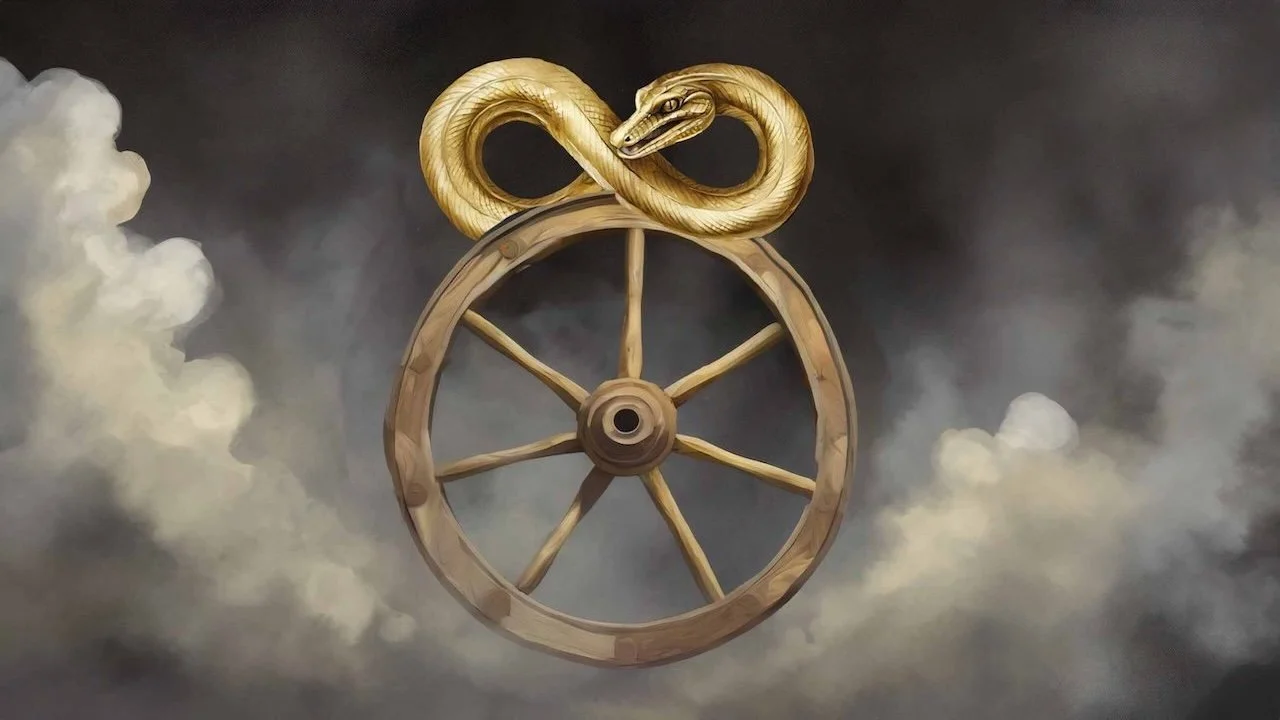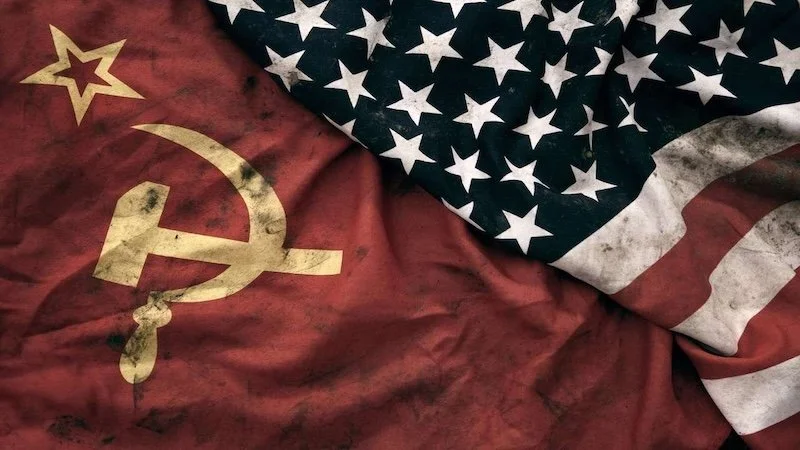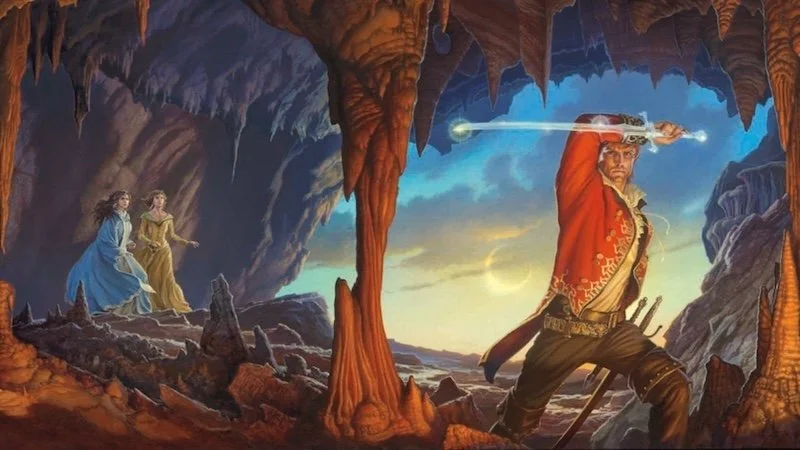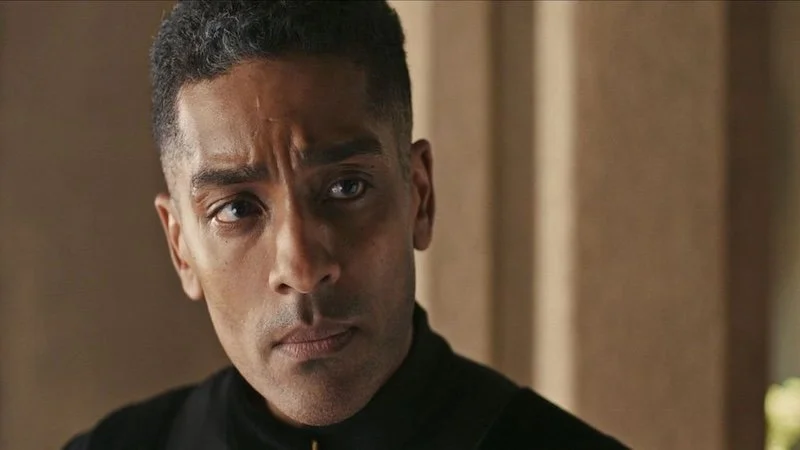Understanding Cyclical Time in 'The Wheel of Time'
Image Source: Nathan B. Weller
If you’ve ever considered diving into The Wheel of Time by Robert Jordan, understand that it is a monumental undertaking. The story, including a later prequel, covers 15 books. Each book is long, and Jordan wrote similarly to Tolkien, with long, beefy prose. Still, it’s one of the great classics in epic fantasy.
Jordan’s worldbuilding is expansive and deep. One of the more all-encompassing themes of the story is time. Along with that is the idea of reincarnation, where people are born again in a later life, and the old-school theme of good vs. evil. Today, we’re going to tackle Jordan’s conceptualization of time.
RELATED:
The first thing to know is that in The Wheel of Time, time is cyclical, with no beginning and no end, at least one that can be identified, and it takes place on Earth. Yes, this Earth. The beginning of every book, and now the show’s pilot, has the same sentences: The Wheel of Time turns, and Ages come and pass, leaving memories that become legend. Legend fades to myth, and even myth is long forgotten when the Age that gave it birth comes again. The idea here is that we, the readers, exist during either an earlier age than the story, or in an Age yet to come. Because it’s cyclical, our time will come and go and come again.
In a deep dive into the lore, or if you pay really close attention across the 15 books, you get hints of our existence within the cycle of time. Based on the lore, our own age existed within what is called and referred to as an Age of Myth, or the First Age. There are references to a man named Lenn who went to the moon in the belly of a metal bird. That would be a reference to John Glenn, and the metal bird would be a reference to the Apollo Program. Others also include references to Merk and Mosk the Giant. They would fight each other with lances of fire that could reach across the world. These would be references to America (Merk) and Russia (Mosk = Moscow) in the Cold War, and the lances of fire referring to Intercontinental Ballistic Missiles. In the story we read, this Age has only continued to live on through the telling of myths and traveling storytellers known as gleemen. When the Age of the story passes, those stories will likely be forgotten, until the First Age comes again and the Pattern weaves something similar.
Image Source: ThoughtCo.
The Wheel is conceptualized in the image of a seven-spoked wheel. Each spoke represents an Age and they last for a long time, thousands of years. All of this fits what is called the Great Pattern, therefore many imagine the Wheel of Time almost like a loom, spinning thread. The Great Pattern governs everything, in a way, and each Age has the same base pattern when it comes around. However, the fine details of the pattern vary somewhat to a lot, and that depends on people known as ta’veren.
Ta’veren are important people during their Age because they have this sort of preternatural ability to alter the Pattern. The show and the books tend to describe it as a sort of pull factor as if they pull people to them in order to do great deeds. These deeds are the great defining events of the Age, and according to the cyclical nature of time, these events will happen again. They may look a little different next time the Age comes to pass, because each ta’veren has the will to act within the Pattern, but the Age-defining events as turning points and great shifts happen nonetheless.
Image Source: IGN
This then brings up the concept of reincarnation. Reincarnation is a central theme in the books and even the show. Because time is cyclical, and each Age will come again, and the Ages are made up of threads on a spoke, an individual’s thread will supposedly come again. Do people remember their past lives? Can they access their past life memories? The short answer is no, the long answer is a little more complicated.
Some people can remember their past lives. It seems to be only relegated to ta’veren, but not even all of them. For example, Rand definitely can, and it’s something that comes to trouble him more and more as he grows in his power and role. The idea behind the Dragon Reborn is that he is the reinsertion, by the Wheel, of the Dragon, Lews Therin Telamon. We know Rand is the Dragon Reborn for many signs, but also because he starts to hear Lews Therin talk to him, and sometimes even take control of his body. Mat Cauthon is also another ta’veren that can relive their past lives. He may not have the interaction with it as Rand does, but throughout the novels, he grows into a brilliant general and fighter. It confuses him greatly until someone tells him he is the reincarnation of the last King of Manatheren.
Image Source: CBR
There are ways to get outside the Pattern. One is to be the Dark One’s chief lieutenants. Ishamael, his Number One among the Forsaken, is so powerful and high among the Forsaken that he is essentially immortal. While he can be killed, he is no longer bound to the passage of time. There is also the danger of Balefire. Balefire is an incredibly powerful form of magic using the One Power that burns someone from the Pattern. If struck with Balefire, your thread is erased from the Pattern, and the stronger it is, the further back the erasure goes. This means any action they did is forgotten, or rewritten. Since the thread is erased, it will not be there the next time the Wheel passes that Age. It was a weapon used during the Age of Legend and the fight against the Dark One’s followers, but the Pattern itself was beginning to become undone, so all, surprisingly, agreed to no longer use it.
Spoilers Ahead
In the end, this brings up an interesting question: is there such a thing as free will then? Essentially, yes. Balefire is an example of this, as the Pattern has to readjust to the missing threads and ta’veren as well. The actions of Rand at the end of the books illustrates another and tackles the existence of evil. Rand ultimately manages to trap the Dark One in a person’s body, which would allow Rand to kill the Dark One for good, and evil would go with it. But Rand doesn’t do it. He says that to do it would rob people of their concepts of free will, because if there is any bad in this world, what makes it better is essentially people choosing to fight it.
READ NEXT:
Source(s): Fandom
















